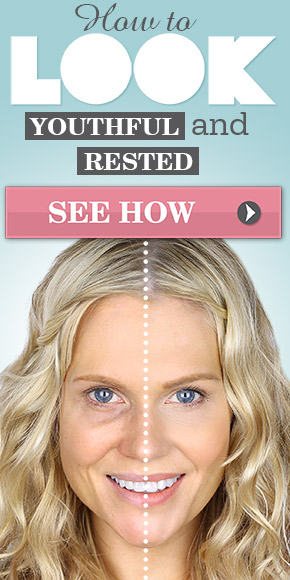 |
| A sexist advertisement for ketchup from the 1950s |
 |
Personally, this is truly sickening to look at. This young girl is placed side by side imitating a model that is being sexualized whilst advertising a bathing suit.
|
When looking up images online for “sexualized advertisements,” practically every photo that came up featured a woman. Men were only seen in these advertisements when gawking at or seducing a woman. Why is it that women are primarily the ones being used for sexual innuendos or for the pleasure of a man? Most of the executives making the decisions about how to sell their products are WASPs and men who attempt to create an advertising world in which no one is “ugly, overweight, poor, struggling, or disabled” (Kilbourne, 122). This Carls Jr. advertisement and this Paris Hilton burger ad look as if they are straight out of a pornographic film. Without reading the title I would not know they were promoting a fast food restaurant. The patriarchal society that we all live in is extremely evident in the types of advertisements and commercials that infiltrate our minds at any given moment.

These images that we are all exposed to are meant to generate dissatisfaction and offer images of transformation of a “new you” (Kellner, 130). The preferred look as described by Wykes and Gunter is “young, slender, sexual, and white” (206). This is clearly evident in the VS advertisement for bras (except that VS included one model who is not white in order to refrain from being accused as discriminatory of other races). Not only are female viewers under the impression that they need to look like the models in order to be considered “beautiful,” but they are also at risk for eating disorders in their hopeful attempts at looking like those they see in advertisements. Most of the advertisements promote a youthful and pore-less look, which insinuates that any sign of aging is to be avoided. As said by Wolf in Culture, “…[the woman] is taught to dismiss her own mother’s teachings about beauty, adornment, and seduction, since her mother has failed- she is aging” (74)
But why is being beautiful something people think they need to obtain in order to feel confident, powerful, or happy? This idea was brought forth by Lindsay King-Miller’s “Here’s What Bothers Me About the New Dove Ad” article. The Dove Ad displayed two separate doors that were labeled “Beautiful” and “Average” and women from around the world were to make the conscious decision as to which door they should walk through. They were conflicted between choosing the door that society tells them they are and how they actually feel about themselves. I agree with the argument that King-Miller made in her article regarding the idea that feeling “average” should not be seen as needing a self-confidence boost. When my friend tells me, “I feel meh today,” my automatic response is to say “oh stop it, you’re beautiful.” But why? Because society and companies like Dove and Lane Bryant make it clear that we are all beautiful- but of course whilst also selling us a bar of soap or pair of jeans.
Within the first 15 seconds of this Maybelline commercial, a clear example of this unrealistic, un-humanlike ideal that woman are told to look like- was expressed. "100% pore-less perfection," "like [your face has] been airbrushed" were phrases the company used to sell a foundation to consumers. Those who view this and similar types of commercials are being told that they are to look flawless as if they were airbrushed which is ironic because that is exactly what the models in the magazines and commercials are.
Finding an alternative way to market the products of food, beauty, and clothing companies is vital for our society, as they are promoting the idea that it is okay for women to be sexualized to the public, supporting the idea of a rape culture, and advocating that in order to be accepted in society, women models must fit a certain mold in order to attend to the needs of a male counterpart. My suggestion for alternative methods of advertising would be to- and this is very dicey- focus solely on the product the company is promoting. Less emphasis should be placed on the model displaying the product and more on the actual product itself. For example, if I were to be working for a makeup company selling a lipstick, rather than having a woman completely covered in different types of beauty products, I would only have her wearing the lipstick. Almost every beauty advertisement that I see has a model advertising a specific product while wearing a plethora of others. We need to be aware of these advertisements and commercials that we see in order to change society’s outlook on what we value and what messages we want to promote.

Works Cited
Kellner, Douglas. Reading Images Critically
Kilbourne, Jean. Beauty and the Beast of Advertising
King-Miller, Lindsay. "Here's What Bothers Me About the New Dove Ad"
Wolf, Naomi. "Beauty Myth"
Wykes, Maggie & Gunter, Barrie. "Conclusion" from The Media and Body Image.
Image/Video References:
https://sites.psu.edu/jshap426/2014/09/23/rcl-4-you-mean-a-woman-can-open-it/
http://about-face.org/wp-content/uploads/2010/01/line.jpg
https://www.youtube.com/watch?v=VK0ZxBgqU6M
https://www.youtube.com/watch?v=JsyOXm4W9gs
http://www.sparksummit.com/wp-content/uploads/2012/07/lovemybody.png
http://www.beautyandtheboutique.tv/younger/
https://nataliecupac.wordpress.com/2014/03/21/burger-kings-super-seven-incher-itll-blow-your-mind-away-this-ad-definitely-does-but-for-all-the-wrong-reasons/
https://www.youtube.com/watch?v=7DdM-4siaQw
https://www.youtube.com/watch?v=MTgeUVOxl8E
http://i1276.photobucket.com/albums/y472/johnsalmonworld/IMG_2684_zps9636a7a7.jpg
http://images.hellogiggles.com/uploads/2015/12/29/gwenopi-copy-700x525c.jpg

No comments:
Post a Comment